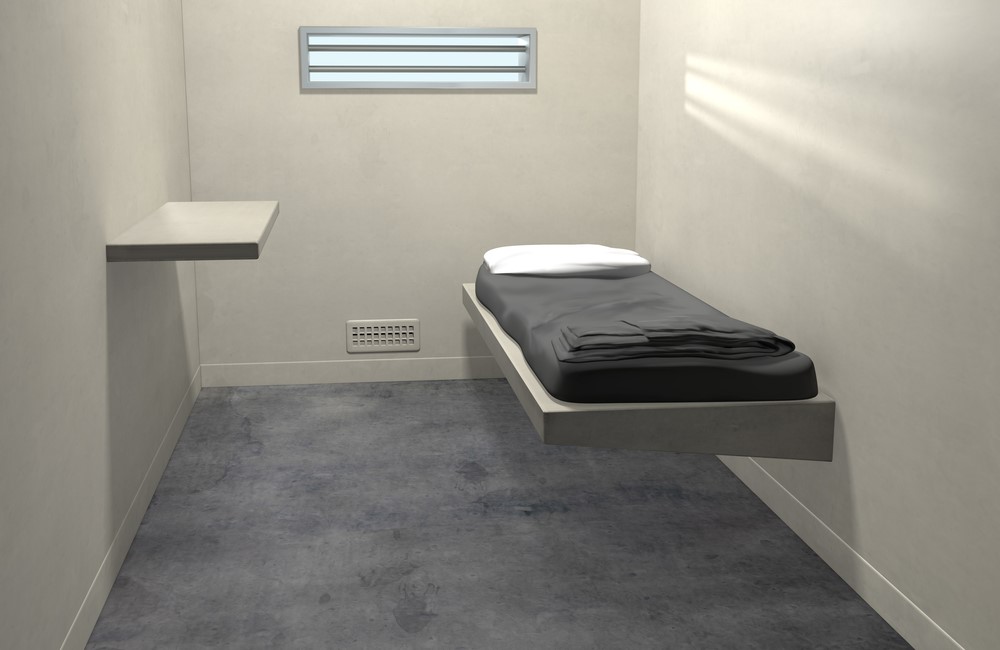Solitary Confinement and COVID-19

On March 28th, 2020, Patrick Jones became the first person incarcerated in federal prison to die of coronavirus. At the time of his death, Jones had served 12 years of his 27-year sentence for a non-violent drug charge. He was working hard on appeals, hoping to get out early to live a different kind of life with his children. The spread of coronavirus in prison made that dream an impossibility. Since Jones’s death, four other inmates died of COVID-19 at the institution in Louisiana at which he was being held.
In response to the deaths and to the continued spread of the virus in the facility, six immunocompromised incarcerated individuals at the prison have sued for early release, claiming that the response to the situation has been too slow and that their lives are in serious danger. They don’t want their sentences to turn out to be death sentences, as Jones’ did. Their suit was filed by the ACLU last week.
Concerns about the spread of coronavirus in detention facilities has motivated both state and federal detention facilities to release some prisoners, as I have written about here. Other approaches to dealing with the outbreak are more disturbing. The Federal Bureau of Prisons announced that, for the next two weeks, inmates will be confined to their cells for 14 days—a move that strongly resembles implementation of solitary confinement for the entire prison population. At the end of the 14-day period, the action will be reassessed and may be extended if necessary.
There is good evidence to support the conclusion that solitary confinement takes a significant mental toll on those who are subjected to it. Former Harvard psychologist Stuart Grassian conducted a study that indicated that roughly a third of people in solitary confinement were “actively psychotic and/or acutely suicidal.” In addition to those conditions, those held in solitary confinement experienced conditions such as “hallucinations; panic attacks; overt paranoia; diminished impulse control; hypersensitivity to external stimuli; and difficulties with thinking, concentration and memory.”
Under ordinary conditions, solitary confinement is used by prison employees for a range of reasons. Inmates are sent to solitary confinement for disciplinary reasons. They also may end up there for their own protection when there is reason to believe that a threat exists to life or well-being. Many argue that there are no legitimate reasons to relegate a person to solitary confinement and that the practice constitutes cruel and unusual punishment. In keeping with this judgment, a handful of states have passed laws limiting or banning the practice.
Lack of access to consistent, quality mental health services exacerbates this problem. There is evidence to suggest that, at least when it comes to federal institutions, mental health issues frequently go unresolved. Given the known link between solitary confinement and mental illness, at a very minimum, funding and staff should be provided to adequately and humanely address the predictable mental illness this policy is likely to cause.
In response to these general concerns about solitary confinement, some argue that desperate times call for desperate measures. This situation lends itself to no ideal solutions. Confining incarcerated people to their cells is the lesser of two evils. It may be the case that solitary confinement leads to mental illness, but mental illness is better than dying of coronavirus. They argue that there is simply nothing else to do.
Others argue that the rapid spread of infectious disease is a predictable part of an incarcerated experience. When the offender chose to commit a crime, they knew that they might be caught and that the prison experience wouldn’t be pleasant. There is a reason why the possibility of prison is supposed to serve as a deterrent to crime. We have to punish people who commit crimes, or the law will become meaningless. Prison officials must do their best under difficult circumstances, and solitary confinement in these cases may be the best they can do given their obligation to keep those who have committed crimes incarcerated.
In response, one might challenge such a strenuous commitment to the idea that it is morally necessary to keep individuals who have committed crimes incarcerated come what may, even when doing so means they will live weeks in solitary confinement. The right approach might be to let many more inmates out of prison than we have so far (but only under the conditions that their situation isn’t more compromised outside of prison than it is inside). There may be no ready humane strategies for dealing with this pandemic, but with any luck this will cause our culture to radically rethink how we understand criminality and the proper role of punishment.
One significant challenge to bringing about real change is that individuals who have committed and/or have been convicted of crimes are politically marginalized. They have limited platforms for speech, and, in many cases, they can’t vote. Many people adopt a retributivist attitude toward criminal punishment, which results in a state of affairs in which no one is paying attention to the way incarcerated people are treated.
If, indeed, inmates must be held in solitary confinement for their own good, steps should be taken to ensure that this is done as humanely as possible. They should be treated with respect and regard, their desires to communicate with friends and family should be honored to the greatest extent possible, and their need for exercise and recreation should be accommodated.
Now that we’ve seen the problems that a pandemic of this magnitude can pose for detention facilities, we are morally obligated to see to it that we don’t return to business as usual after the it is over. What changes can we make to institutions to make it less likely that we’ll have to resort to solitary confinement in the future? What steps can we take to limit the number of incarcerated people in the United States? More theoretically, we should ask if all crimes should be viewed through the lens of retributivism. In some cases, a broad range of rehabilitative efforts might be more appropriate. An even more holistic approach would focus time and resources on the root social causes of crime so that we’re preventing it from occurring in the first place rather than punishing it in inhumane ways after it has taken place.




